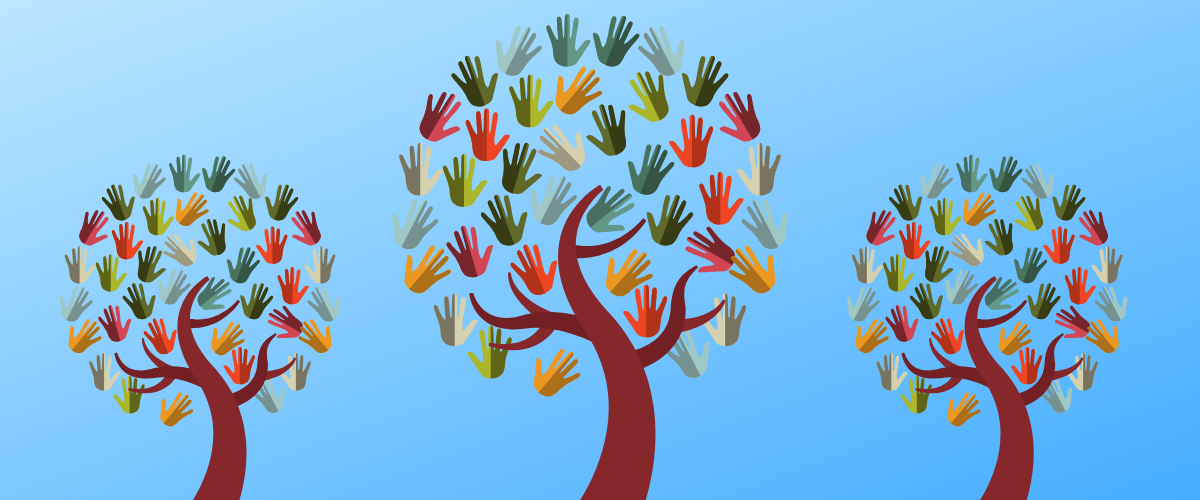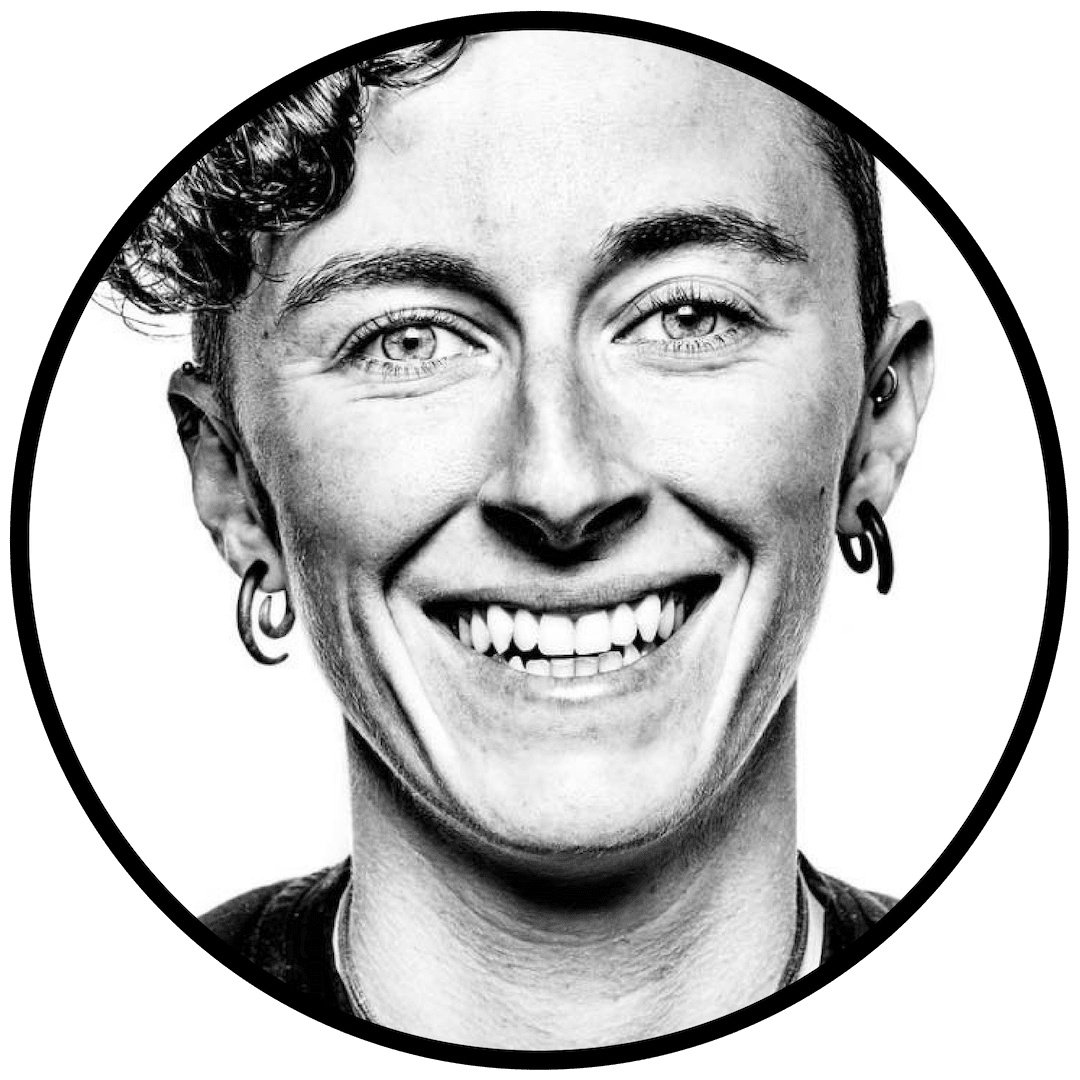Cultivating Space: 10 Steps to Create and Maintain Cultural Relevancy

Hello CWA world!
Before we go any further, I want make a confession...I do not at all consider myself a climber. I know, I know. You're probably wondering "well then why on Earth is she writing a blog post for the CLIMBING Wall Association?!" This is a fair question, so I'll tell y'all a little about myself first and then we'll dive into this month's topic of cultivating inclusive gym spaces, which is in fact something I know a fair bit about.
My name is Elyse Rylander and I use she/her pronouns. I was born on Sauk, Meskwaki, Miami and Ho-Chunk ancestral land (otherwise known as Southern Wisconsin), and took my first canoe trip down the Wisconsin River at the tender age of four weeks. From then on, all of my summers and winters were spent outside canoeing, kayaking, camping, or downhill skiing with my family. In 2006 I started working as an outdoor educator and then paddle sport retail associate. From there I moved to Alutiiq ancestral land (a.k.a. Valdez, AK) where I guided sea kayaking and camping trips in the summers and worked at a climbing gym on Suquamish and Duwamish ancestral land west of Seattle on Bainbridge Island in the winter.
Throughout these years I founded and grew my non-profit, OUT There Adventures, whose mission is to connect the queer community, primarily queer young people, and the outdoors. OTA has now completed four years of programming and also birthed the LGBTQ Outdoor Summit, of which we just held the second annual gathering on Ohlone and Coastal Miwok land north of San Francisco. It is at the intersection of this work around equity, and in particular queer equity, in the outdoors that I have also found myself consulting for the last year as a Partner of The Avarna Group and working with many amazing outdoor organizations and companies committed to furthering outdoor pathways to equity for all.
I was privileged to come of age in the outdoor industry, and it has been fantastic to see the growth in equity work happening in that time, with the most profound change happening in the last few years. While I will always have a bias towards paddle sports, it was my time running youth programs at Island Rock Gym that gave me insight into the amazing potential climbing gyms have to continue to create pathways to equity across all outdoor interests.
As they say, with great power comes great responsibility, which means you may be wondering exactly how your gym can engage in this work further. So let's dive in.
Step One: Define the work.
The words diversity, equity, and inclusion get tossed around with immense frequency, which means their meanings can vary across time and place. At The Avarna Group we have crafted definitions for these words, and others, that we find work well in the context of outdoor spaces, so without further ado, here they are:
Diversity: The differences between us – based on which we experience advantages or encounter barriers to opportunities and resources.
Inclusion: Celebrating, valuing, and amplifying voices, perspectives, styles, values, and identities that have been marginalized.
Equity: An approach based on fairness to ensuring everyone has equal access to the same opportunities; recognizes that advantages and barriers exist. Equity is not the same as equality.
Cultural Competence: Your ability to interact effectively across various dimensions of diversity; to flex with difference.
Cultural Relevance(y): What you do and how you do it is relevant to more people and communities.
If that has your head spinning, don't worry. Sometimes folks find this framing helpful:
Inclusion is what we do.
Equity is how we do it.
Cultural competence is what we need to do it well.
Diversity & cultural relevancy are outcomes.
Take some time to sit with those definitions, and then allow yourself to critically analyze where you and your gym are in terms of engaging with these concepts. This will help you further uncover some of the why's, what's, and how's of this work.
Step Two: Get Right With Yourself
This work truly begins and ends with all of us. Without taking the time to assess our own privileges, lived experiences, and biases, cultivating spaces of true inclusivity becomes near impossible. Just like one has to become acutely aware of their strengths and limitations as it relates to climbing, the same logic must be applied to each of our own individual strengths, but more importantly our blind spots. So take the time to be challenged and humbled, to make mistakes, to correct those mistakes, to make even more mistakes, and then repeat the whole process.
Step Three: Bring It to Work
Since companies and institutions are made up of lots of people, the next logical step in the process after we've all done the hard work of assessing our individual biases is to bring that knowledge to our places of work. This can take many forms, including one of the first steps of simply noticing who is accessing your gym spaces and what the demographic similarities are amongst those members/customers.
Step Four: Consider the Consumer Experience Continuum
It can seem overwhelming to look at an entire business and try to parse out exactly what, where, and how equity work can occur. It can be helpful to think of the possibilities along a continuum wherein we begin with a consumer's first touch point with the gym and end with that consumer turning into a member or a staff person. How does that experience look and feel different for someone based on their identity? How is that process leaving out portions of potential new customers or employees?
Step Five: Marketing
For new members or first-time users, the first interaction they may have with your company is through your website or your social media accounts. Looking at these mediums through the lens of an underrepresented person can provide immense insight into how your gym may initially be perceived.
Step Six: Hiring and Retention
Earlier I broke down some of the biggest buzzwords as it relates to creating inviting spaces for more identities, including the idea of diversity. You may have noticed that The Avarna Group prefers to frame these concepts in relation to each other in a way that specifically notes that diversity is not the thing we lead with, but rather an outcome of all the other good work we do. Many times we have seen companies and organizations attempt to solve their diversity problem by hiring "diverse" people, and many times we have seen these organizations thus exacerbate the problem. Consider not only how to bring in staff with different identities and lived experiences, but how to actually keep them there for the long run.
Step Seven: Built Environment
Consider the messages that are being sent by your facility’s physical space, or built environment. We are seeing progress in this arena around gender inclusivity, and specifically the neutralizing of bathrooms, locker rooms, etc. Beyond this, consider what images are seen once a customer is inside. Who is being represented and who is not? What sort of culture is perpetuated by what you hang on your walls? If your gym is still in the planning stages, how can its location and layout play a role in welcoming in new communities?
Step Eight: Programs
I founded an organization whose soul purpose is to provide outdoor opportunities/programs for people who often self-select out of such spaces because of their identities. As a result of my experiences, I cannot stress enough how significant it is to be able to offer ways for underrepresented identities to come together in a space that was created by them and for them, sometimes exclusively away from other more privileged identities. The next question for your gym is to consider what programs are already offered and how they can be made more truly inclusive for any identity. Sometimes we see this manifest through partnerships.
Step Nine: Partnerships
Just like climbing partners, good business partnerships can be hard to come by. However, partnerships offer climbing gyms, and the industry, some of the greatest potentials to continue to shift the paradigm. I would highly encourage your gym to not even consider going down this road until you've done some serious work on the previous eight steps. If you invite a new community or group into your space in hopes that they will light the DEI way for you, you will undoubtedly cause great damage that may set the whole process back years. If you feel you're ready to engage in this work authentically, with humility and initially ratchet back expectations of rapid increases to the bottom line, then my next piece of advice is to think big and outside the box.
Step Ten: Rinse and Repeat
Simply put: repeat. There will never be an arrival at perfection as it relates to equity because the conversation continues to evolve along with our needs as humans. It is imperative to understand that this work needs to be constantly reflected upon and reworked in order to remain true and relevant. But don't worry, just like we've learned to grow and get better with new gear or new techniques that help us reach new heights, so to will we learn how to grow and get better with this set of skills and tools.
About Elyse Rylander
 Elyse holds a B.A. in Communication Arts, Gender Studies, and LGBT Studies from the University of Wisconsin. She is also a Master of Arts in Adventure Education candidate at Prescott College. Elyse has been an outdoor educator and guide since 2006 and has taken thousands of youth and adults on outdoor adventures across the Midwest, West Coast and Alaska. Elyse founded and currently runs OUT There Adventures and is the co-organizer of the LGBTQ Outdoor Summit..
Elyse holds a B.A. in Communication Arts, Gender Studies, and LGBT Studies from the University of Wisconsin. She is also a Master of Arts in Adventure Education candidate at Prescott College. Elyse has been an outdoor educator and guide since 2006 and has taken thousands of youth and adults on outdoor adventures across the Midwest, West Coast and Alaska. Elyse founded and currently runs OUT There Adventures and is the co-organizer of the LGBTQ Outdoor Summit..
